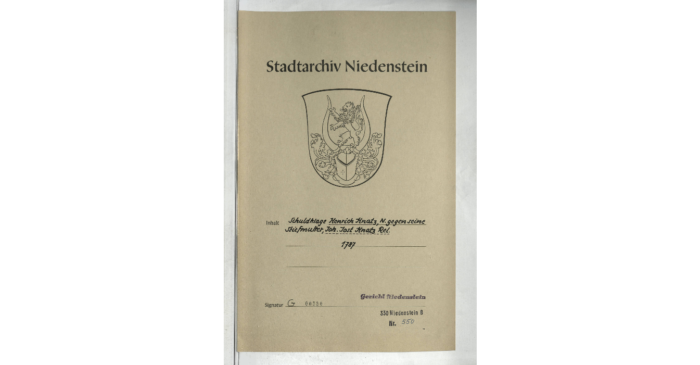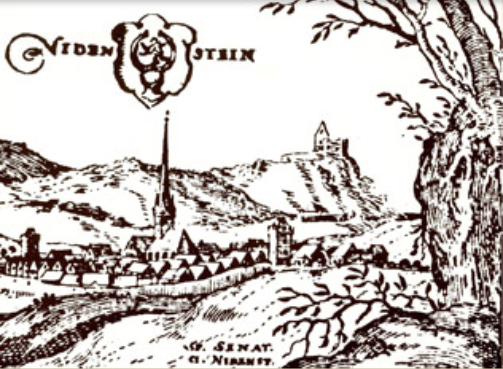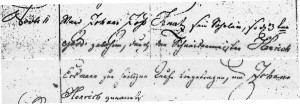Note that the records show that Gerhard Knatz died of illness in Charlestown. However, it is known that some soldiers who deserted were reported as died because this would affect the payment that the government received for his service. Further research into whether Gerhard continued to live in America is necessary.
The records in Volume 4 which include Knatz from Niedenstein does not indicate they died, nor is there any indication whether they returned to Germany or stayed in America. After the war ended in 1783, some 17,313 Hessian soldiers returned to their homelands. Of the 12,526 who did not return, about 7,700 had died. Some 1,200 were killed in action and 6,354 died from illness or accidents, mostly the former. The high rate of fatalities from disease during wartime was a recurring element up until improvements in sanitation and understanding of germ theory in the late 19th century. Approximately 5,000 Hessians settled in North America, both in the United States and Canada. From the Kassel forces which would have included the Knatz from Niedenstein, only 914 men were discharged at the end of their military service. The number of missing and deserted from the Kassel forces was 2949. In 1784, the deserters from the Kassel forces were given an additional 2 years to report back from service in America without penalty. After that, their property was subject to confiscation and family members were turned out on the street. As a practical matter and when you consider the ages of the Knatz Hessian soldiers, they probably had little property to lose (A Social History of Hesse by Daniel Heinemeier, 2002).
Heinrich Knatz, was born on November 3rd, 1759, son of Johann Jost Knatz. A copy of his baptismal record dated November 11, 1759 from the Niedenstein church books is shown below (microfiche copy at the Archives of the Evangelical Church of Kurhesseb-Waldeck, Kassel, Germany).
Heinrich Knatz returned to his home town of Niedenstein. We know this because in 1787 he sued his stepmother Maria Christina Croll, who married Heinrich’s father Johann Jost Knatz. Heinrich was a child of the marriage of Johann Jost Knatz and Anna Christina Bartholmey. They had two sons, Heinrich and his brother Johann Conrad. The suit against his stepmother indicates that in the year 1776, Heinrich lend his father 6 thaler cash of the 15 thaler money he received when he enrolled as a soldier to America. In fact Heinrich was very litigious and first he sued his father Johann Jost in 1786 over his mother’s estate. Johann Jost died that year and the following year Heinrich sued his stepmother. Copies of the litigation are available on the Landesarchiv Hessen.de (Marburg Archives) website and can be accessed by searching the digital portal Archinsys with the terms Niedenstein and Knatz.

Ancestry.com under their immigration records lists an unidentified Knatz coming to the US in 1777 and Gerhard Knatz coming to the US in 1776 and 1787. It could be that Gerhardt Knatz returned to Hesse and then came back to the US in 1787. The reference for these records are the same documents from the Marburg Archives in Germany (HESSISCHE TRUPPEN IM AMERIKANISCHEN UNABHAENGIGKEITSKRIEG, (HETRINA): Index nach Familiennamen. (Marburg: Archivschule) (Veroeffentlichungen der Archivschule Marburg, Institut fuer Archivwissenschaft, Nr. 10). Band III. Marburg, 1976.
In 2006, I was contacted by Kimberly Knatz-Grzyb from Youngtown Ohio, who told me her father had done research on the Knatz family and the Hessian soldiers. She said her father has searched all the way back to Heinrich. She said that her Dad had even seen his little drummer boy Hessian uniform when he was a child but she thinks it may be in a local Maryland museum now. She believes Heinrich was 10 years old when he was in the Revolutionary war and that he may have sent for his bride from Germany when he was of marrying age. (Note the birth year of Heinrich above indicates he would have been a teenager when he came to the US to fight as a Hessian soldier.) Kimberly said these were childhood memories and she does not trust them without verification. He family lived in Maryland, originally Lonaconey (Cumberland Gap) and many live in Baltimore. She had checked with her Aunt who told her that 5 siblings had moved to Baltimore possible around late 1800’s or early 1900’s. I have since lost contact with Kimberly although I am very interested in learning more about the Hessian soldier connection.


